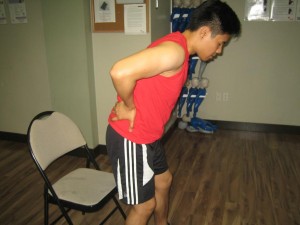The hip flexors are the muscles composed of the front part of the hip and they are utilized when bending the hip as well as during kicking and running. The hip flexors are prone to pain or injury if excessive or constant stress is placed on them.
Hip flexor pain is often due to strains that transpire once the hip flexor muscles endured tears. A direct impact, tight muscles and poor conditioning can also lead to hip flexor strain. Even though hip flexor pain must be assessed by a doctor, there are certain actions that you can carry out in order to minimize the pain experienced by the individual. By enrolling in one of the classes on first aid, you are ready to provide the appropriate measures to ease the symptoms.

How to manage hip flexor pain
- You have to instruct the individual to rest the affected hip. Always remember that a sore hip flexor muscle can greatly benefit from rest. Activities that caused the pain must be avoided. You can apply an ice pack over the affected hip for about 20 minutes at a time at several times in a day. Just make sure that the affected leg is elevated as much as possible after 48 hours from the initial start of the pain. Even over-the-counter pain medications can be given to reduce the pain.
- A doctor must be consulted if the pain lasts for more than 2-3 days. The doctor will conduct a physical exam, medical history and even imaging studies to come up with a diagnosis. The individual should follow the instructions given by the doctor and this usually includes rest, stretching, using crutches, anti-inflammatory medications and physical therapy.
- The individual should stretch the hips. By stretching the hips, it can help reduce the hip flexor pain and prevent it from reoccurring. It is recommended to perform the standing hip flexor stretch. The individual should stand up straight with the feet flat on the ground and shoulder-width apart. The knees must be straight but not locked. He/she should stand beside a chair or table for support and slowly lift the knee off the ground as high as possible. The back must stay straight and tighten the hip when performing the stretch. The position must be held for a count of 2 seconds, relax and then repeat 10 times at two times in a day.
- The exercise routine should be modified as the individual recovers. Avoid activities that trigger pain and choose low-impact activities. The low-impact exercises will place minimal stress on the hips as well as prevent jarring movements. The individual should try walking on a treadmill, swimming, using an elliptical machine, low-impact aerobics or riding a stationary bike.
Considerations to bear in mind
If the pain experienced by the individual persists while engaging in exercise or stretching, the individual should stop the activity and consult a doctor as soon as possible.
The ideal way to prevent hip flexor injury and muscle tightness is to observe proper stretching of the hips before an exercise routine or when participating in sports.
